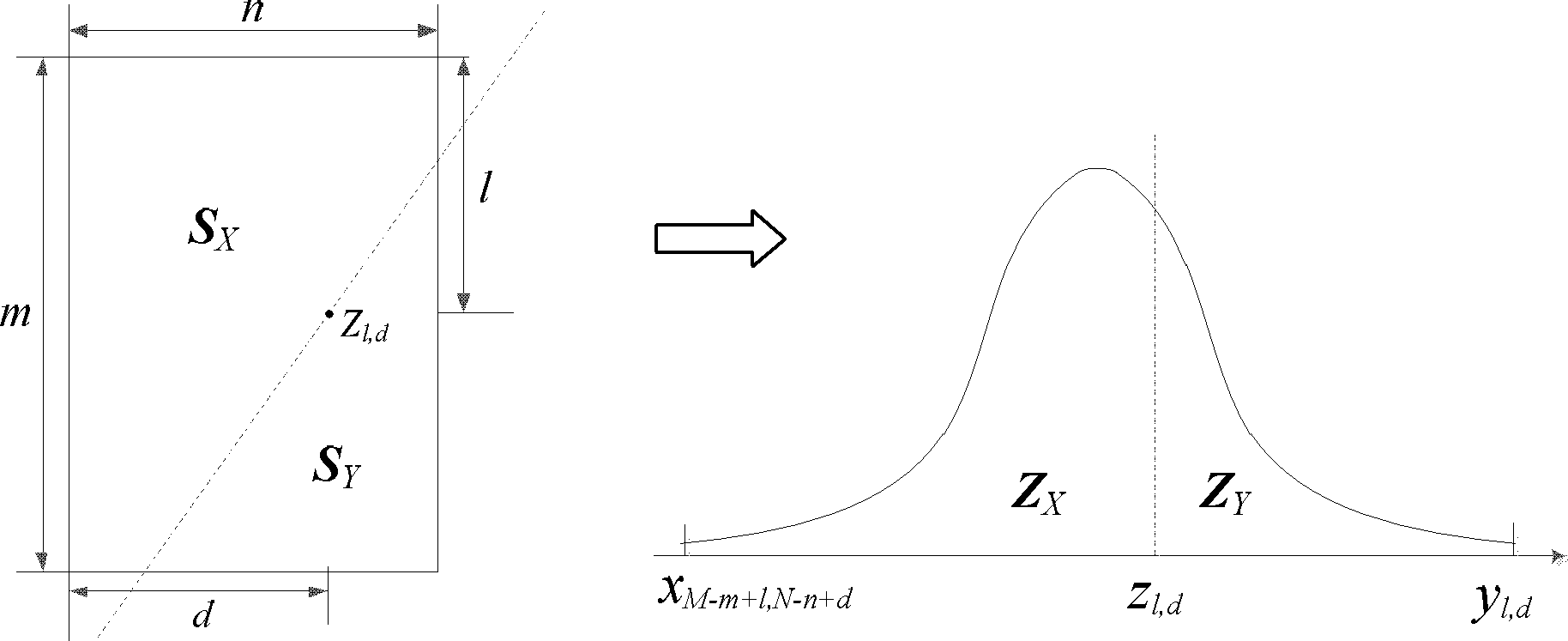Image splicing method based on minimum mean square error criterion
A minimum mean square error, image stitching technology, applied in the field of image processing, can solve problems such as affecting visual effects, and achieve the effect of improving stitching quality, eliminating stitching marks, and avoiding cracks
- Summary
- Abstract
- Description
- Claims
- Application Information
AI Technical Summary
Problems solved by technology
Method used
Image
Examples
specific Embodiment approach 1
[0022] Specific implementation mode one: as Figure 1~3 As shown, an image mosaic method based on the minimum mean square error criterion described in this embodiment: two images X and Y with a resolution of M×N are set to be mosaiced, and the best overlapping area is an m×n area; set the format of these two images as black and white BMP files, and the range of pixel values is X i,j , Y i,j ∈ {0,...,255}, (i=0, 1...M-1, j=0, 1...N-1); take the upper left corner of the image as X 0,0 , with an X in the lower right corner M-1,N-1 , then the best coincidence area can be expressed in X and Y as: X M-m:M-1,N-n:N-1 and Y 0:m-1,0:n-1 ;
[0023] Said method is realized according to the following steps:
[0024] Step 1. Coarse registration: Coarse registration is completed on the splicing area of image X and Y, and the sliding range of the image splicing area is initially determined as:
[0025] X M ...
specific Embodiment approach 2
[0038] Specific implementation mode two: as image 3 As shown, in this embodiment, the specific process of the area ratio Gaussian transition described in step five is:
[0039] Step 5 (1), define the overlapping area Z m×n The pixel point on is Z l,d , and the pixel values of the corresponding pixel points in images X and Y are respectively x M-m+l,N-n+d and y l,d ; Pass through the pixel point Z l,d Make a dividing line with a slope of m / n, and the area of the upper left area of the dividing line is S X , the area of the lower right area of the dividing line is S Y ; At this time, the area ratio of the boundary line is S X / S Y ;
[0040] Step 5 (2), use the Gaussian model transition to make the brightness transition of the image stitching area smoother, and find the corresponding pixel value z in the Gaussian distribution map l,d , so that z l,d Left area Z X and the right area Z Y Satisfy:
[0041] Z X / Z Y →S X / S Y (4)
[0042] In ...
PUM
 Login to View More
Login to View More Abstract
Description
Claims
Application Information
 Login to View More
Login to View More - Generate Ideas
- Intellectual Property
- Life Sciences
- Materials
- Tech Scout
- Unparalleled Data Quality
- Higher Quality Content
- 60% Fewer Hallucinations
Browse by: Latest US Patents, China's latest patents, Technical Efficacy Thesaurus, Application Domain, Technology Topic, Popular Technical Reports.
© 2025 PatSnap. All rights reserved.Legal|Privacy policy|Modern Slavery Act Transparency Statement|Sitemap|About US| Contact US: help@patsnap.com



